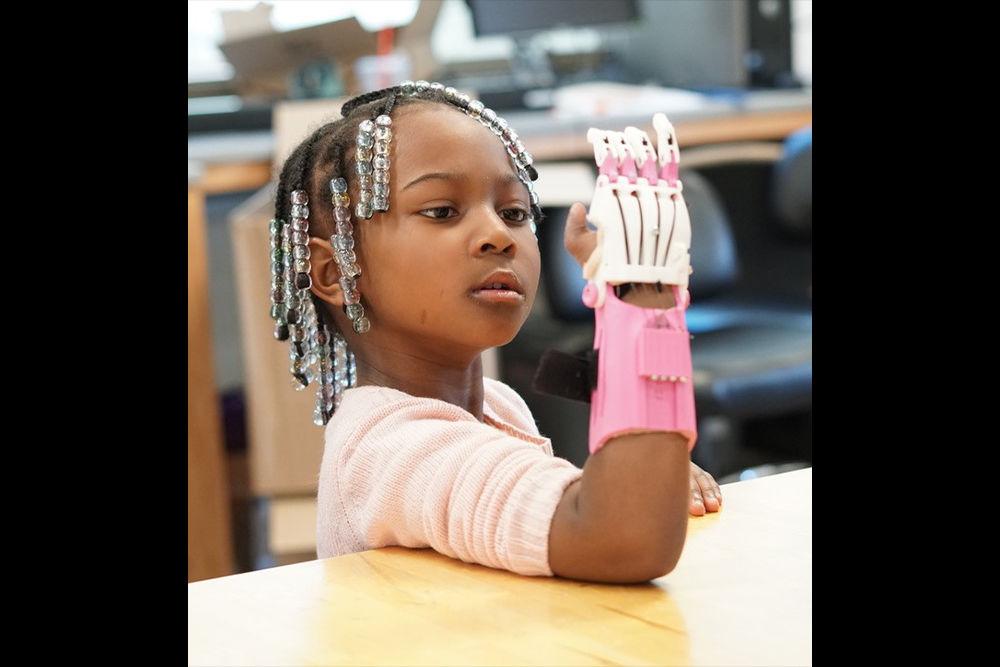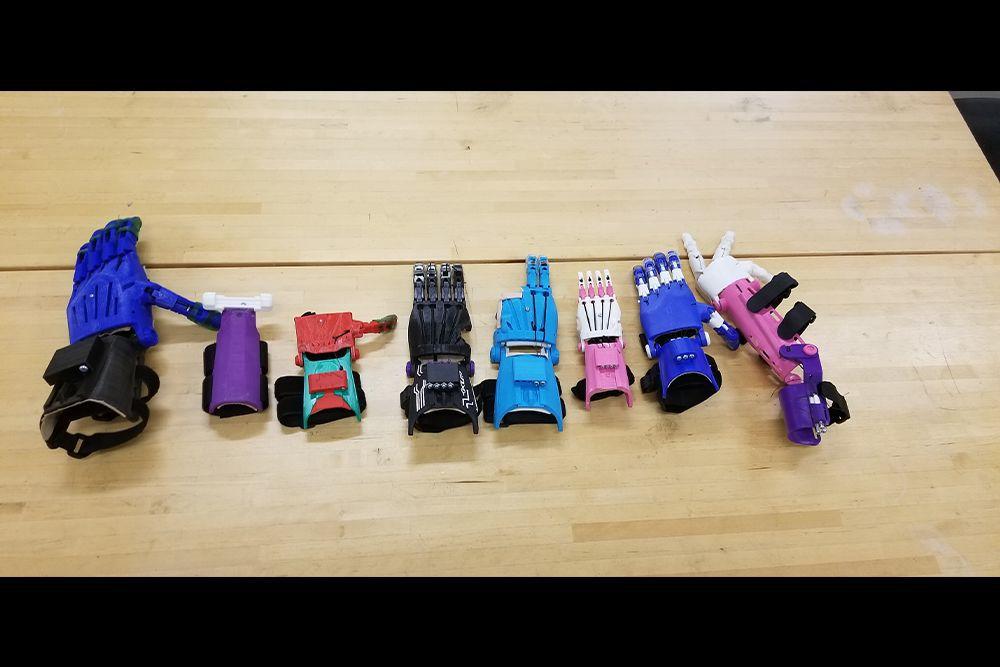After the semester-long process of engineering custom 3D-printed prosthetics for children, the Helping Hand Project culminated its work by hosting a family event on Sunday, April 14, flying in families from across the nation for a day of fun and to be given their free recreational prosthetic device.
The Helping Hand Project has various chapters in North Carolina, including NC State, UNC Chapel Hill, UNC Charlotte, and Durham Tech.
Ryan Hobbs, fourth-year in biomedical engineering, has been president of the Helping Hand Project at NC State since May of 2017.
“The Helping Hand Project is a student-run nonprofit organization,” Hobbs said. “Our primary focus is to provide low cost, recreational prosthetic devices for kids, while also providing a supportive community for people with upper-limb differences.”
Claire Vallery, fifth-year in biomedical engineering and Spanish, was an officer for the NC State chapter of the Helping Hand Project when it was first created. She is now a member and volunteer.
“Being a chapter of a nonprofit, the goal has always been to meet the gap between the insurance and what the kid needs,” Vallery said. “They’re growing out of devices so quickly that it’s possible to keep up with the cost…It’s tens of thousands of dollars, incredibly expensive and it’s not always covered by insurance, even if you have the best.”
Hobbs said that the teams begin each semester by taking measurements for each kid and end with the assembly of the hands.
“We have eight case design teams, with one team doing a more intense project with electromechanical hands … and then we also have a public relations team and a support team,” Hobbs said. “We meet for about two hours on a Wednesday night and the teams get together and they work on designing, modifying, [3D] printing, and assembling the hands for the kids.”
The Helping Hand Project purchased three 3D printers of their own and shared them with the senior design classes for biomedical engineering, according to Vallery.
“We get the files off of this open source software online…we make any adjustments that are necessary in SolidWorks, and then we print, we put them all together because it prints in all these tiny little pieces, and we give it to the kid,” Vallery said. “We go through a prototyping phase where we print stuff in like a preliminary quality of just, so we can make, make sure things work how we thought they would work, because we’re changing all of the files.
While in past years only about three or four hands were created each semester, the increase in members has allowed for more teams and more hands, to be made. This semester, ten hands were made, Hobbs said.
“We started out as a biomedical engineering club, but I love bringing in new disciplines, new perspectives, and having a very diverse environment of talent,” Hobbs said. “People can bring in and use what they’re learning in school to really make an impact on the community, and more importantly, a little kid’s life, by giving them something they’ve never had before. That’s just such an awesome thing to do.”
To learn more about the Helping Hand Project at NC State, students can visit their website or visit their Facebook page.









